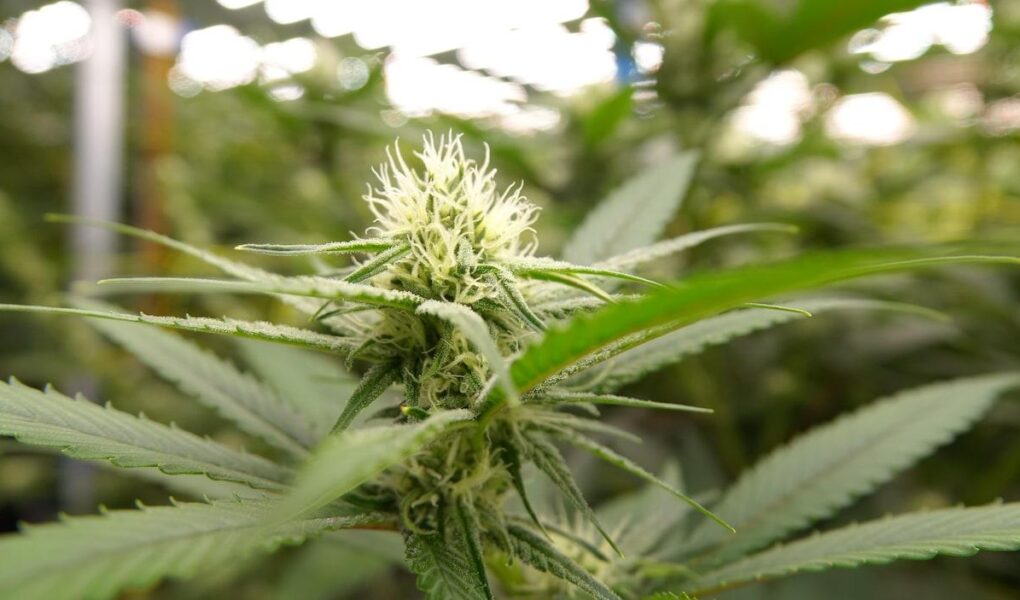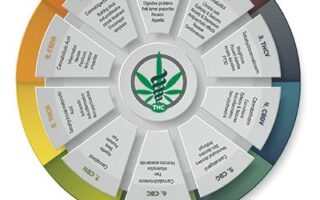In a world where language constantly evolves and meanings shift, the terms “cannabis” and “marijuana” often spark curiosity and confusion alike. Are they interchangeable, or do they hold distinct nuances in the realms of botany, culture, and law? This article embarks on a journey to demystify these two terms, exploring their origins, uses, and the broader implications of their definitions in an ever-evolving landscape of legalization and societal perspectives. Whether you’re a seasoned connoisseur or a curious newcomer to the topic, understanding the difference between cannabis and marijuana is essential for navigating conversations about this multifaceted plant and its myriad uses. Join us as we unravel the threads of meaning woven into these two words, illuminating the path toward a clearer understanding of what they truly represent.
Table of Contents
- Understanding the Terminology: Cannabis vs. Marijuana
- The Botanical Basis: Differentiating Between Types of Plants
- Cultural Perspectives: How Context Shapes Meaning
- Legal Implications: Navigating the Landscape of Terminology
- Q&A
- In Summary
Understanding the Terminology: Cannabis vs. Marijuana
To clarify the distinction, it’s essential to recognize that cannabis is a broad term encompassing the entire plant genus, which includes various species and cultivars. This plant is renowned for its psychoactive and medicinal properties, primarily due to its rich cannabinoid content. Within the cannabis kingdom, one of the most notable species is Cannabis sativa, known for its uplifting effects, while Cannabis indica is often associated with calming effects. It’s important to note that when we talk about cannabis in a legal or scientific context, we refer to the plant as a whole, including both its recreational and medicinal uses.
On the other hand, marijuana specifically refers to the dried flowers and leaves derived from certain cannabis plants, primarily those bred for their psychoactive properties. This term typically describes preparations of cannabis that contain significant levels of delta-9-tetrahydrocannabinol (THC), which is the active compound responsible for the “high” associated with its use. while all marijuana falls under the cannabis umbrella, not all cannabis is classified as marijuana. Here’s a quick overview in table format:
| Term | Definition |
|---|---|
| Cannabis | The entire plant genus, including all species and cultivars. |
| Marijuana | Dried flowers and leaves of cannabis, primarily bred for psychoactive effects. |
The Botanical Basis: Differentiating Between Types of Plants
To truly understand the distinctions between cannabis and marijuana, one must delve into the botanical world where plants are categorized based on various criteria such as morphology, genetics, and chemical composition. Cannabis is the broader term encompassing various species of the plant, primarily Cannabis sativa, Cannabis indica, and Cannabis ruderalis. Meanwhile, marijuana specifically refers to the psychoactive varieties of cannabis primarily cultivated for their high tetrahydrocannabinol (THC) content, which induces the characteristic feeling of euphoria. It’s essential to recognize that all marijuana is cannabis, but not all cannabis qualifies as marijuana. This differentiation allows for a clearer understanding of the plant’s medicinal and recreational uses.
Aside from recreational use, cannabis plants vary significantly in their chemical profiles and potential applications. These can be illustrated in the following ways:
- Marijuana: Primarily produces high THC levels, used mainly for recreational and some medicinal purposes.
- Cannabis Hemp: Contains lower levels of THC and higher concentrations of cannabidiol (CBD), recognized for various therapeutic benefits without psychoactive effects.
- Hemp Seeds: Nutritionally rich, offering proteins, essential fatty acids, and more.
| Type | THC Level | Primary Use |
|---|---|---|
| Marijuana | High | Psychoactive Effects |
| Cannabis Hemp | Low | Industrial & Medicinal |
This categorization not only reflects the legal and cultural contexts surrounding the use of these plants but also highlights their unique roles and benefits in modern society, from relaxation to therapeutic applications. Understanding these differences provides greater insight into the conversations surrounding cannabis and marijuana, paving the way for informed choices and discussions.
Cultural Perspectives: How Context Shapes Meaning
The terms “cannabis” and “marijuana” are often used interchangeably, yet their meanings can diverge significantly based on cultural contexts and legal frameworks. Cannabis is the scientific name for the plant and encompasses all of its varieties, including those used for recreational, medicinal, and industrial purposes. In contrast, marijuana typically refers to the psychoactive varieties of cannabis, primarily associated with its use for recreational purposes. In some regions, the word “marijuana” carries historical and social connotations that refer to its prohibition and stigma, which can influence public perception and policy. Understanding the difference relies not just on botanical definitions, but also on the varying legal, social, and cultural contexts that shape their usage.
Across different cultures, the implications of these terms can further complicate discussions. For example, in Canada, the legalization of cannabis has reframed its perception, stripping away much of the stigma once attached to marijuana. In contrast, in some Asian countries, cannabis, or marijuana, remains tightly controlled and carries significant legal penalties, impacting public discourse and acceptance. Furthermore, the historical roots of these terms can invoke feelings connected to race, identity, and health. Thus, cultural perspectives significantly influence how these terms are understood, highlighting the intricate ways language and context shape meaning and acceptance.
Legal Implications: Navigating the Landscape of Terminology
When delving into the legal implications surrounding cannabis and marijuana, one must first recognize that terminology can significantly influence legislation, public perception, and even enforcement practices. Cannabis is a broader term that encompasses a variety of plants, including hemp and marijuana, while marijuana specifically refers to the psychoactive varieties cultivated for recreational or medicinal use. As laws evolve, the distinction between these terms becomes crucial, especially in jurisdictions that are just beginning to embrace changes in cannabis legislation.
Understanding legal definitions is key for stakeholders—be it lawmakers, business owners, or consumers. For instance, many states have adopted regulations that treat cannabis and marijuana differently based on their THC content. Below is a concise overview of varying terminology and its implications:
| Term | Definition | Legal Implications |
|---|---|---|
| Cannabis | Genus of plants, including all varieties. | May be subject to different regulations depending on the context. |
| Marijuana | Refers to the psychoactive cannabis varieties. | Often highly regulated due to psychoactive properties. |
| Hemp | Low-THC cannabis varieties. | Legal in many jurisdictions under the Farm Bill if below 0.3% THC. |
This distinction paves the way for discussions regarding legality, quality control, and safety standards. As legal frameworks continue to adapt, the importance of precise language cannot be overstated; misinterpretation of these terms may lead to legal conflicts, regulatory challenges, and public confusion. Therefore, staying informed and aware of the evolving terminology is essential for anyone engaged in the cannabis industry or advocating for its reforms.
Q&A
Q&A: Do Cannabis and Marijuana Mean the Same Thing?
Q1: What is the difference between cannabis and marijuana?
A1: While many people use the terms “cannabis” and “marijuana” interchangeably, they do not mean exactly the same thing. Cannabis is the overarching genus name for the plant that includes multiple species—most notably, Cannabis sativa, Cannabis indica, and Cannabis ruderalis. Marijuana, on the other hand, specifically refers to the cultivated varieties of cannabis that are high in tetrahydrocannabinol (THC), the psychoactive compound that can produce a “high.”
Q2: So, can we say all marijuana is cannabis, but not all cannabis is marijuana?
A2: Precisely! Think of cannabis as the umbrella term that covers the entire plant and its various uses, while marijuana denotes the specific varieties bred for recreational and medicinal use. Under this umbrella, you’ll also find hemp, which is a cannabis variety predominantly grown for its fibers, seeds, and low THC content.
Q3: Are there other terms related to cannabis I should know about?
A3: Absolutely! In addition to “cannabis” and “marijuana,” you may encounter terms like “hemp” (referring to low-THC varieties used for industrial purposes) and “cannabinoids” (the active compounds found in the cannabis plant, including THC and cannabidiol, or CBD). Understanding these distinctions can help clarify conversations around cannabis and its uses.
Q4: Is the difference between cannabis and marijuana important in legal contexts?
A4: Yes, it can be very important! Legal frameworks often differentiate based on the THC content. For instance, in many regions, cannabis with a THC level below a certain threshold may be classified as hemp, which is legal to grow and use, whereas marijuana, which typically has higher THC levels, may be subject to stricter regulations. This distinction can affect everything from farming practices to market availability and consumer access.
Q5: How does the cultural perception of these terms differ?
A5: Cultural perceptions can vary widely. The term “marijuana” has historically been associated with recreational use and stigma, often linked to illegal activities. In contrast, “cannabis” has been increasingly embraced in a medical or therapeutic context as awareness grows about its potential benefits. As society continues to evolve in its understanding of the plant, we may see a shift in how these terms are used and perceived.
Q6: What is the takeaway for someone trying to understand these terms?
A6: The key takeaway is that while the terms “cannabis” and ”marijuana” are often used synonymously, they serve distinct purposes in language and regulation. Remembering that cannabis is the broader genus, while marijuana refers specifically to psychoactive varieties, will help you navigate conversations about this versatile and increasingly relevant plant in today’s society.
Q7: Where can I learn more about cannabis and its uses?
A7: If you’re looking to expand your knowledge, there are numerous resources available including reputable websites, books by experts in botany and pharmacology, and community forums. Additionally, educational programs and workshops offered by local dispensaries or agriculture departments can provide valuable insights into the science and applications of cannabis.
In Summary
In the intricate tapestry of language and culture, the terms “cannabis” and “marijuana” weave their own distinct threads, each carrying a unique set of connotations and implications. While they often find themselves used interchangeably in casual conversation, delving deeper reveals shades of difference grounded in historical, botanical, and societal contexts. Understanding these nuances not only enriches our grasp of the plant itself but also illuminates broader conversations surrounding legality, stigma, and medicinal use. As we continue to explore the evolving landscape of cannabis, let us navigate this language with clarity and respect, recognizing the importance of words in shaping our perception of this versatile plant. Whether you prefer “cannabis” or “marijuana,” it’s clear that both terms play a significant role in our collective dialogue, inviting us to contemplate not just their meanings, but the very nature of our evolving relationship with nature’s bounty.



